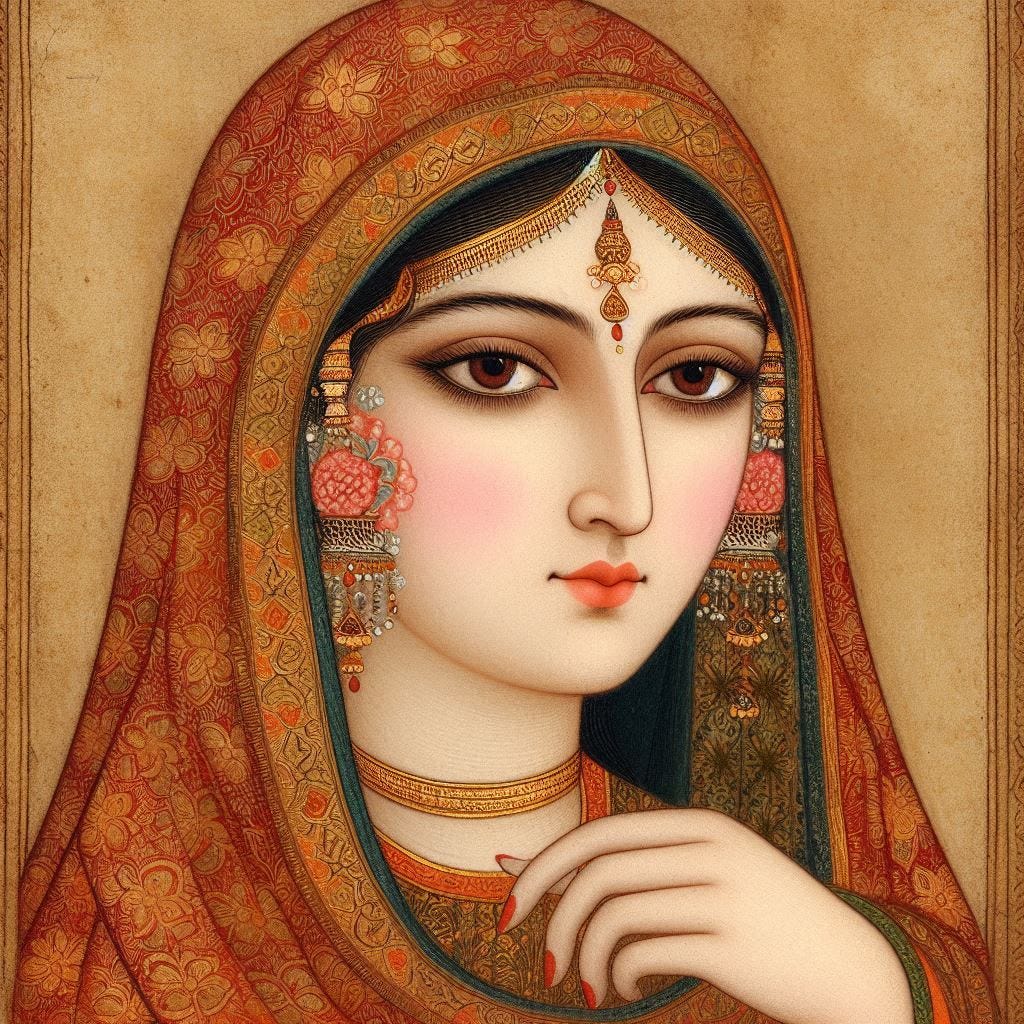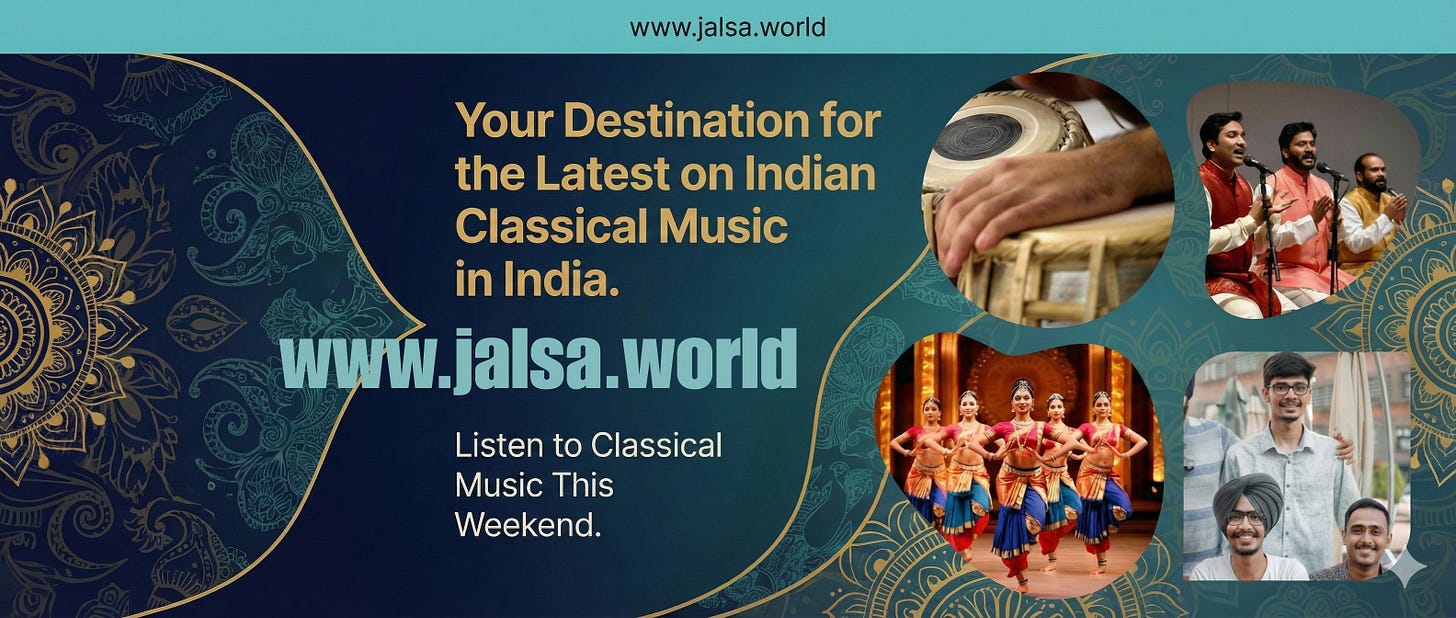Chaap Tilak: Origin, meaning, and legacy of this 13th century masterpiece
Known for its deep spiritual themes and cultural fusion, blending elements of Islamic and Indic traditions, this masterpiece heralded a new era of poetry and music in India.
It’s hard to succinctly describe the importance of Amir Khusro and his body of work. For starters, some refer to him as the "voice of India" or "Parrot of India" (Tuti-e-Hind). He was a multifaceted genius - an Indo-Persian Sufi singer, musician, poet, scholar, and mystic who lived during the Delhi Sultanate period. His contributions to literature, music, and spirituality were profound and long-lasting.
Chaap Tilak is considered his most famous work (Kalam). Its poetic style is unique and is a product of the amalgamation of Persian, Turkish, and Indian cultures of the era. The poem is written in Braj / Hindvi (Vraj - originating in Mathura, the birthplace of Krishna) which is unusual since he mostly wrote in Persian. It is said that he was inspired to write this song after he noticed a bunch of local village women singing to themselves, in the local tongue, while they were going about their day and drawing water from the wells.
Amir Khusro’s Influence on music and culture
Khusrau's impact on music was equally significant. He is often referred to as the "father of qawwali," a form of Sufi devotional music that remains popular in the Indian subcontinent to this day. Qawwali was a new form of expression, one where you could sing and express your devotion towards your God - in the case of this Song, Amir Khusro’s spiritual guide Nizamuddin Auliya. 13th and 14th Century India was fertile ground for new forms of worship, and you see many popular saints from the “Bhakti tradition” also emerge in this era, also “singing” to the Lord.
”He embodied the syncretic culture that was developing in medieval India.”
He is also believed to have invented the sitar, a stringed instrument that became central to Indian classical music, and to have developed several musical styles including tarana. The rudra veena had existed in India for a long time, but the Sitar was a 3-stringed variant that rose to popularity in the Hindustani tradition of music.
In the realm of language, Khusrau played a crucial role in the development of Hindavi - a sort of proto Hindi, which later evolved into Hindi and Urdu. His use of this language in his poetry helped elevate its status and laid the groundwork for its future as a literary language.
He also wrote several historical works which sheds light on the life and times of 13th Century Delhi Sultanate. Khusrau's Khamsa (meaning "quintet" or "five") is a collection of five narrative poems (masnavis) written in Persian. It was completed in 1298 and was inspired by the earlier work of the Persian poet Nizami Ganjavi. He mimiced the writing style of his hero, who brought a colloquial and realistic style to Persian epics. “Aina-i-Sikandari” is one of the 5 poems which includes 1400 verses on Alexander the Great and his visit to India.

Meaning of the song - Chaap Tilak
छाप तिलक सब छीनी रे मोसे नैना मिलाइके
Chhaap tilak sab chheeni re mose naina milaike
You've taken away all my adornments just by a glance
बात अगम कह दीनी रे मोसे नैना मिलाइके
Baat agam kah deeni re mose naina milaike
You've spoken the ineffable just by a glance
प्रेम भटी का मधवा पिलाइके
Prem bhati ka madhva pilaike
By making me drink the wine of love's distillery
मतवाली कर लीनी रे मोसे नैना मिलाइके
Matwaali kar leeni re mose naina milaike
You've intoxicated me just by a glance
गोरी गोरी बईयाँ, हरी हरी चूड़ियाँ
Gori gori baiyaan, hari hari choodiyaan
Fair, fair arms, green, green bangles
बईयाँ पकड़ हर लीनी रे मोसे नैना मिलाइके
Baiyaan pakar har leeni re mose naina milaike
You've stolen my heart by grasping my arms, just by a glance
बल बल जाऊं मैं तोरे रंग रजवा
Bal bal jaaun main tore rang rajwa
I am devoted to your colored dust
अपनी सी रंग दीनी रे मोसे नैना मिलाइके
Apni si rang deeni re mose naina milaike
You've colored me in your hue just by a glance
ख़ुसरो निजाम के बल बल जाए
Khusro Nijam ke bal bal jaaye
Khusro sacrifices himself over Nijam (his spiritual guide)
मोहे सुहागन कीनी रे मोसे नैना मिलाइके
Mohe suhaagan keeni re mose naina milaike
You've made me a wedded bride just by a glance
बात अजब कह दीनी रे मोसे नैना मिलाइके
Baat ajab kah deeni re mose naina milaike
You've spoken something wonderful just by a glance
The verses convey the idea that a mere glance from the beloved (representing God) can strip away all worldly identities and attachments, leading to a state of spiritual intoxication. This alluding to the divine while referencing a beloved is a common theme in Sufi literature. The rich symbolism of Tilak, and Choodi (sacred vermillion and bangles), is a reference to the cultural synthesis and mixing of traditions prevalent in those times.
Certain populist figures assert that this song serves as a vehicle for 'conversion,' suggesting it depicts a Hindu woman abandoning her cultural symbols like Tilak and Bangles in pursuit of spiritual enlightenment. However, this interpretation is as misguided as the motives behind it and the animosity it fosters.
Here’s one of my favorite renditions of this song by Abida Parveen and Ustad Rahat Fateh Ali Khan.
Here are some other versions of this that I like. Most are set to Raag Yaman or Yaman Kalyan.
The inimitable Ustad Nursat Fateh Ali Khan’s version of Chaap Tilak
Lata Mangeshkar and Asha Bhosle’s version from the movie Main Tulsi Tere Aanganki (1978)
Lastly, I had the privilege of singing this earlier this year at a local musical-theatre production of Akbar Birbal. When the director and I were brainstorming sufi songs to end the show with, we unanimously picked this song.
In the mood for live classical music this weekend?
Check out exclusive classical music events @ www.jalsa.world
for baithaks, concerts, workshops, teachers, and other classical events.



